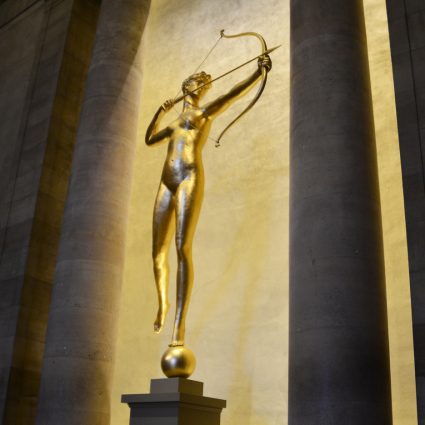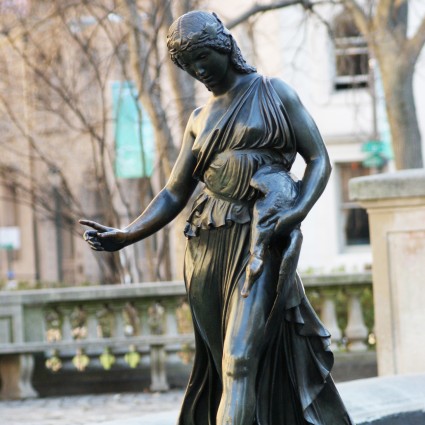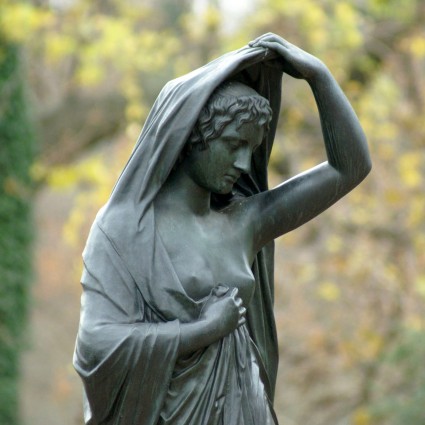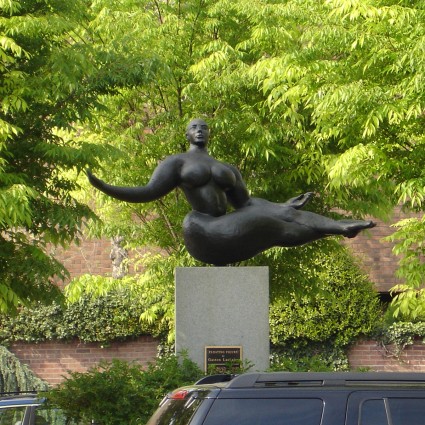At A Glance
Maja was first exhibited at the Association’s 1949 Sculpture International Exhibition at the Philadelphia Museum of Art, organized to select artists for the Ellen Phillips Samuel Memorial
The sculpture traveled to the Art Institute of Chicago and MoMA in the early 1950s, and returned to the Philadelphia Museum of Art’s East Terrace from 1954-1992 until renovations brought the work into storage
An important German sculptor of the 20th century, Marcks taught at the Bauhaus and was labeled a “degenerate artist” by Nazis, who destroyed many of his works
After decades in storage, Maja was reinstalled on the Benjamin Franklin Parkway in a new park, “Maja Park”
Several other casts exist, including on UCLA’s campus; outside Kunsthalle Emden, Germany; at Kunst Museum Winterthur, Switzerland; and in other collections

Maja (pronounced \MAI-uh\) by the German artist Gerhard Marcks was first exhibited in Philadelphia in 1949 at the Association for Public Art’s Third Sculpture International Exhibition at the Philadelphia Museum of Art, where the sculpture was exhibited prominently at the top of the Museum’s steps. This series of sculpture exhibitions in 1933, 1940, and 1949 featured works by hundreds of sculptors from around the world, and was organized by the Association to introduce the public to contemporary sculpture and to identify artists for the Ellen Phillips Samuel Memorial on Kelly Drive. Maja was considered a particularly significant sculpture in the exhibition – which included works by Alexander Calder, Jacques Lipchitz, Pablo Picasso, and Barbara Hepworth – and the Association decided to purchase the sculpture.
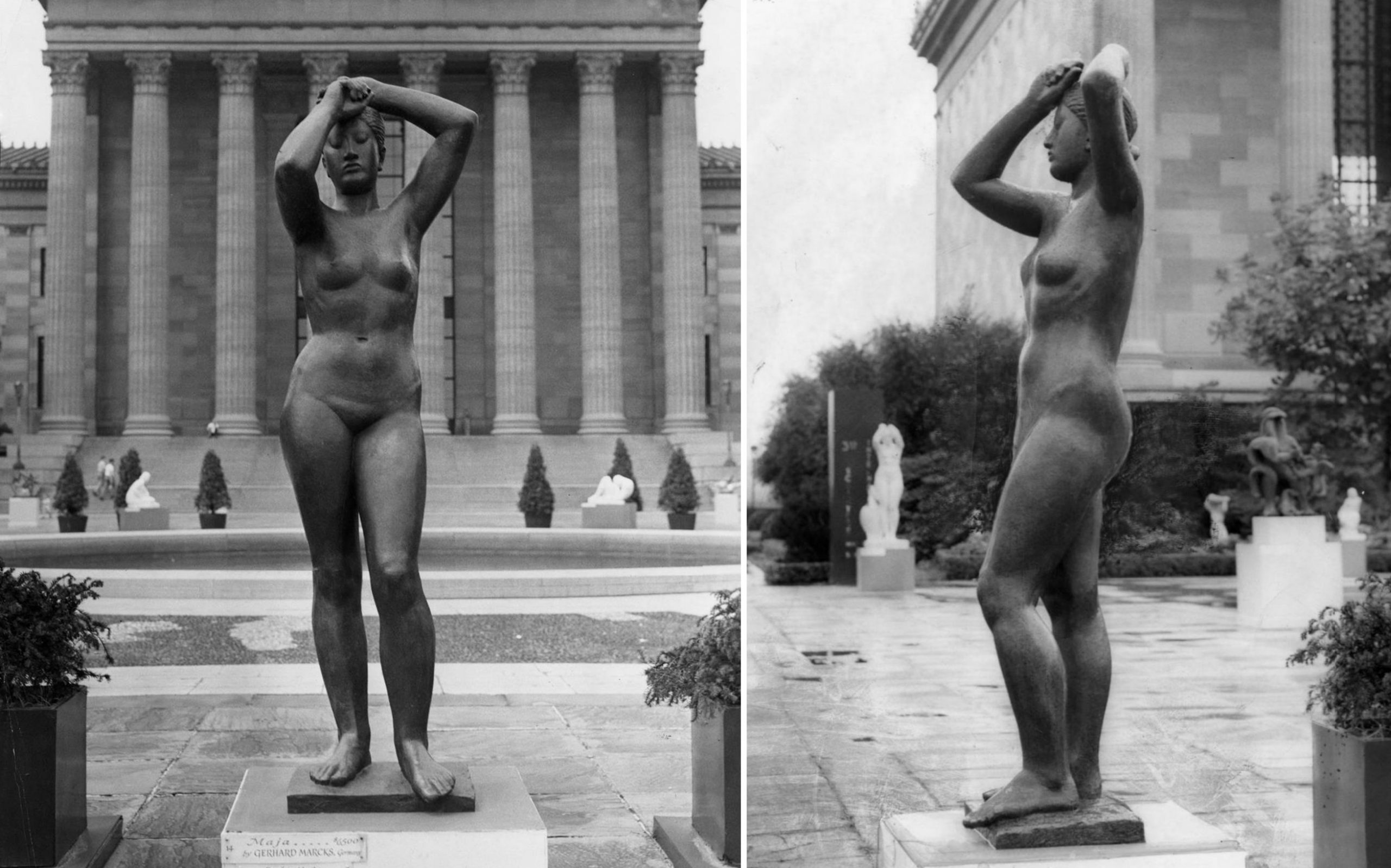
Maja went on to be part of another notable exhibition, Sculpture of the Twentieth Century. The Philadelphia Museum of Art was the first venue for the exhibition, which then traveled to the Art Institute of Chicago and culminated at MoMA in 1953. When Maja returned to Philadelphia, the sculpture was installed on the East Terrace of the Philadelphia Museum of Art until 1992, when it was removed and placed in storage due to the renovation of the terrace.
The installation of Maja calls attention to the resolve of artists working under duress or persecution. Labeled a “degenerate artist” by the Nazis, many of Marcks’ sculptures were destroyed during WWII, as they were considered by the Nazis to be too expressive, disproportionate, and not serving the German Ideal.
In March 2021, after decades out of public view, the sculpture was installed in a new public park, Maja Park, coming soon to the Benjamin Franklin Parkway. The development of Maja Park, designed by Ground Reconsidered, has been a private/public partnership between AIR Communities, which owns the adjacent Park Towne Place Museum District Residences, and Philadelphia Parks & Recreation, with support from the Commonwealth of Pennsylvania. (See all park partners here.)
Born in Berlin, Gerhard Marcks (1889-1981) was a German artist who taught at the Bauhaus and helped revive the art of sculpture in Germany in the early 20th century. He is primarily known for his sculptures, but also for his drawings, woodcuts, lithographs, and ceramics. His figurative artworks, like Maja, never seem heroic or laden with pathos, but instead reflect humanistic moods and a quiet behavior.
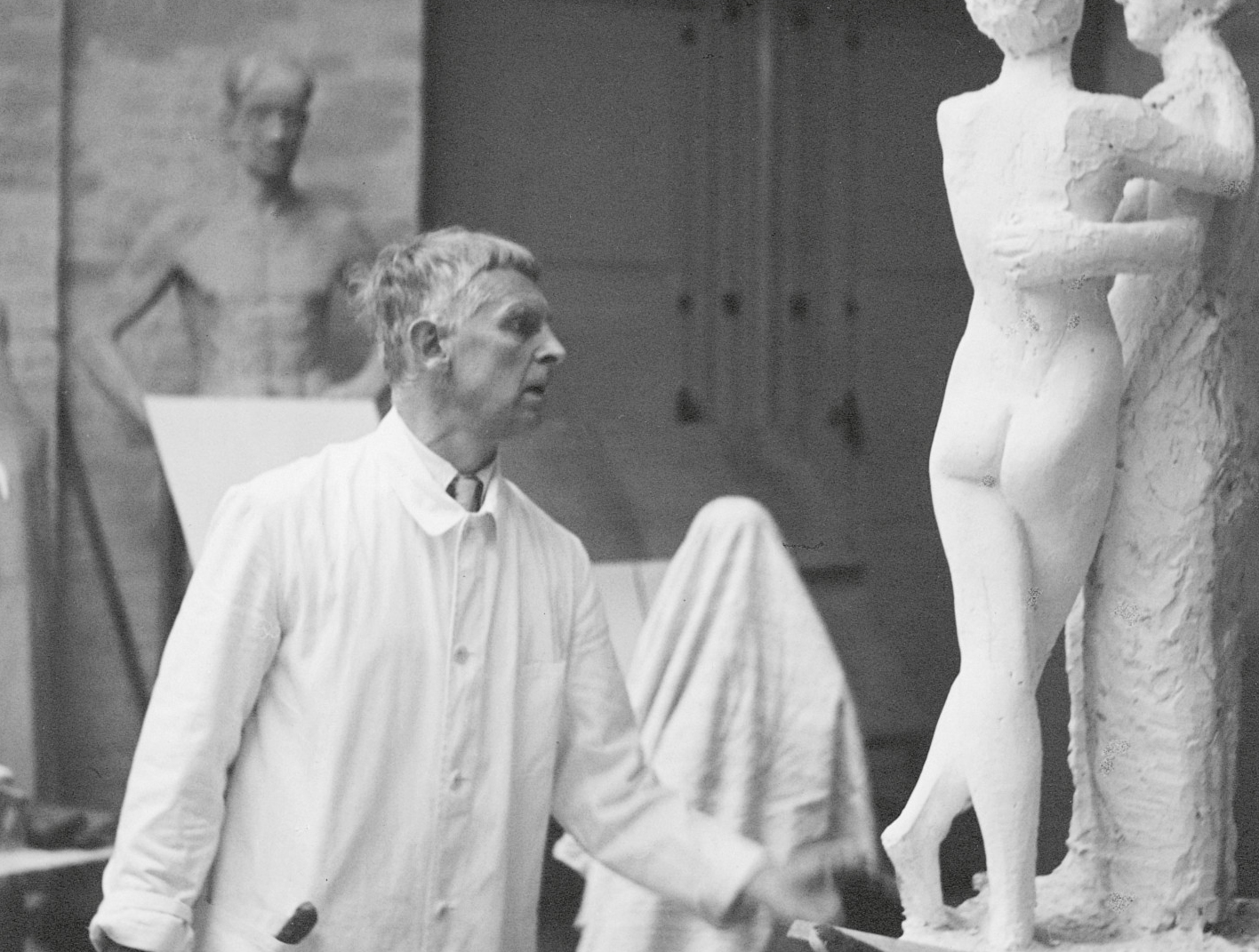
The installation of Maja calls attention to the resolve of artists working under duress or persecution. Labeled a “degenerate artist” by the Nazis, many of Marcks’ sculptures were destroyed during WWII, as they were considered by the Nazis to be too expressive, disproportionate, and not serving the German Ideal. Marcks was subsequently barred from exhibiting or selling his sculptures, and a number of his artworks were confiscated, melted down, and repurposed for war materials.
Voices heard in the Museum Without Walls: AUDIO program: Dr. Arie Hartog is Director and former Curator of the Gerhard Marcks Haus in Bremen, Germany, which houses a substantial collection of works by artist Gerhard Marcks. His research focus is the history of 20th century sculpture. Dr. Paul B. Jaskot is Professor of Art, Art History and Visual Studies at Duke University. His scholarly work focuses on the political history of Nazi art and architecture as well as its postwar cultural impact. Patricia C. Phillips is a public art scholar, curator, art critic, and an aPA trustee. She is the former Chief Academic Officer and Academic Dean of Moore College of Art & Design. | Segment Producer: Alex Lewis | Videography: Greenhouse Media
Museum Without Walls: AUDIO is the Association for Public Art’s award-winning audio program for Philadelphia’s outdoor sculpture. Available for free by phone, mobile app, or online, the program features more than 150 voices from all walks of life – artists, educators, civic leaders, historians, and those with personal connections to the artworks.
RESOURCES:
- The Association for Public Art’s Digital Archive
- Philadelphia Inquirer: One of city’s landmark works of public art is coming out of storage and into its own park
- Hidden City: A Symbol of Survival and Hope Returns to the Parkway
- Featured essay by Dr. Paul B. Jaskot: Gerhard Marcks and the Nazi Concept of “Degenerate Art”
- Restoring Maja: the conservation process
- The Gerhard Marcks Museum in Bremen, Germany
- How to Request Images
Enjoying this content?
Click here to donate and help us continue to tell the story of public art in Philadelphia.
This artwork is part of the Along the Benjamin Franklin Parkway tour
